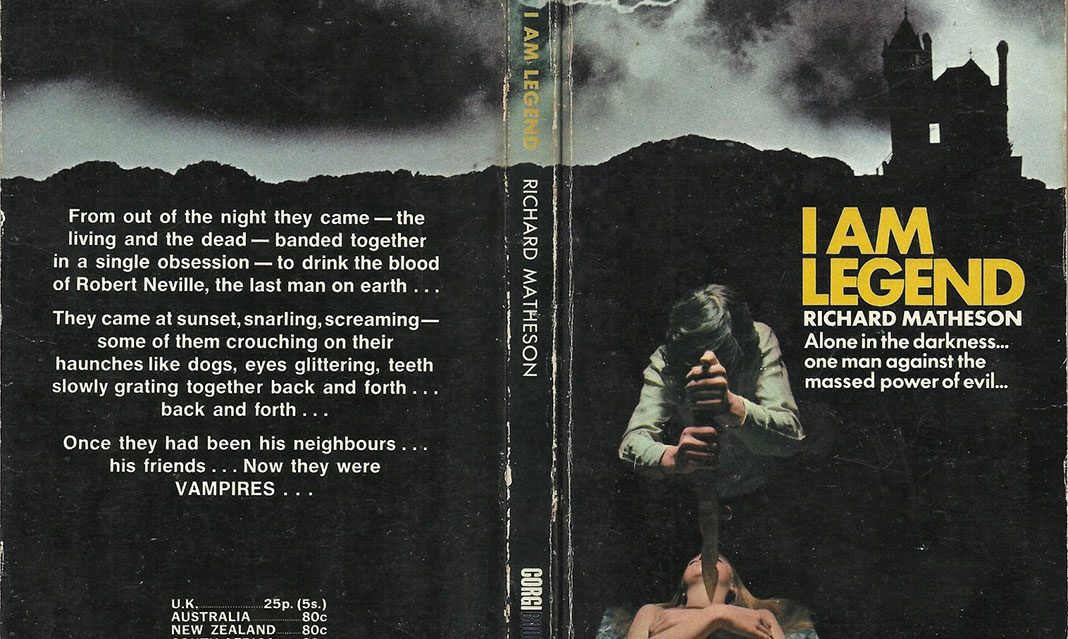On Tuesday, November 14, the English and Drama Student Society hosted a guest lecture with senior lecturer in the Department of English and Drama, Dr. Koenig-Woodyard. The talk, titled “Every monster has a story,” questioned ideas about monsters and monster studies, specifically in the novel I Am Legend (1954) by Richard Matheson.
According to Koenig-Woodyard, scholars have been studying monsters since forever: “What’s interesting about monsters is they break taboos and they break rules. Monsters kill. Monsters eat each other. We like what we see in monsters but we don’t imagine it ourselves.” Koenig-Woodyard presented novel ways for thinking about monsters in literature: narratively, philosophically, and scientifically.
I Am Legend, and Matheson’s other works, Koenig-Woodyard mentioned, have had a profound influence on the horror and science-fiction genre, influencing books, movies, and video games. Since the novel first came out, there have been around 160 print editions and several movies that have been made based on the book.
In the context of narrative, the setting, conflict, plot, characters, the protagonist, and the antagonist, are all elements present in I Am Legend.
However, as Koenig-Woodyard highlighted, Matheson does something fantastic—he flips the protagonist and the antagonist, which are made clear at the end of the novel. “If you look at Neville, the vampire slayer, through the eyes of the vampires, he’s the gothic entity. He’s the monster.”
Philosophically, Koenig-Woodyard described, I Am Legend presents the idea of post-humanism. In the novel, post-humanism is woven through the inter-species romantic relationship between Neville, a human, and Ruth, a vampire. “In so many ways, the novel deconstructs the binary that we know about vampire novels,” said Koenig-Woodyard, “Humans kill vampires, you can’t live with them. You can’t be attracted to them.” But in the novel, Ruth leaves Neville a love letter, which explains that the vampires are going to rebuild society slowly but surely. The letter also says that upon the advent of their new society, the vampires will probably have to kill him, but she still loved him. Although Ruth is a different species, Neville still feels a romantic, sexual attraction towards her and other female vampires, which is wrong in his mind.
Scientifically speaking, throughout the novel, Koenig-Woodyard described there is much discussion around the source of the vampire virus. They suggest things like germ warfare, bombings, viruses, mosquitoes, and even superbugs. Eventually Neville figures out it’s an airborne virus and spreads through insects. Koenig-Woodyard also mentioned that this book was influenced by the fear of pandemics and the American government’s interest in mass vaccinations for diseases, like polio in the 1950s.
Another aspect of the book Koenig-Woodyard was interested in was how many vampires Neville kills.
Koenig-Woodyard presented slides with mathematic calculations to come up with an answer: “If you assume he killed 47 vampires in four hours, that’s around one vampire every five minutes. If the vampires off-page are watching him, he’s starting to appear as a monster. Monsters kill with that kind of efficiency.”
These ideas lead to question: Who is the real monster in I Am Legend? Neville or the vampires? From the vampire’s point of view, Neville is the monster—he has slaughtered hundreds of vampires in an effort to save himself. He alters his killing technique several times throughout the novel. He uses stakes through the heart, he tries to weaponize the essence of garlic, he starts dragging the vampires out into the sunlight, and then he discovers that if he cuts their wrists deep enough, the vampires will bleed out and die. In Neville’s mind, however, the vampires are the monster because they have already destroyed the human race.
Koenig-Woodyard also mentioned that the language used to describe the vampires, “animalistic, demonic, and terrifying,” slowly starts applying to Neville. The senior lecturer explained that by looking at monsters through narrative, philosophical, and scientific lenses, we can use monsters to understand that there are two sides to every story, and maybe, those who we see as monsters are more than they appear, or they at least have a good reason for behaving the way that they do.
Koenig-Woodyard is currently working on a new website called monsterstudieslab.com, a digital space for discussing monsters in some capacity, whether it’s through podcasts, blogs, documents, or links.
Professor Koenig-Woodyard is teaching ENG239 next semester, a course on the fantasy, horror, and gothic genres.



